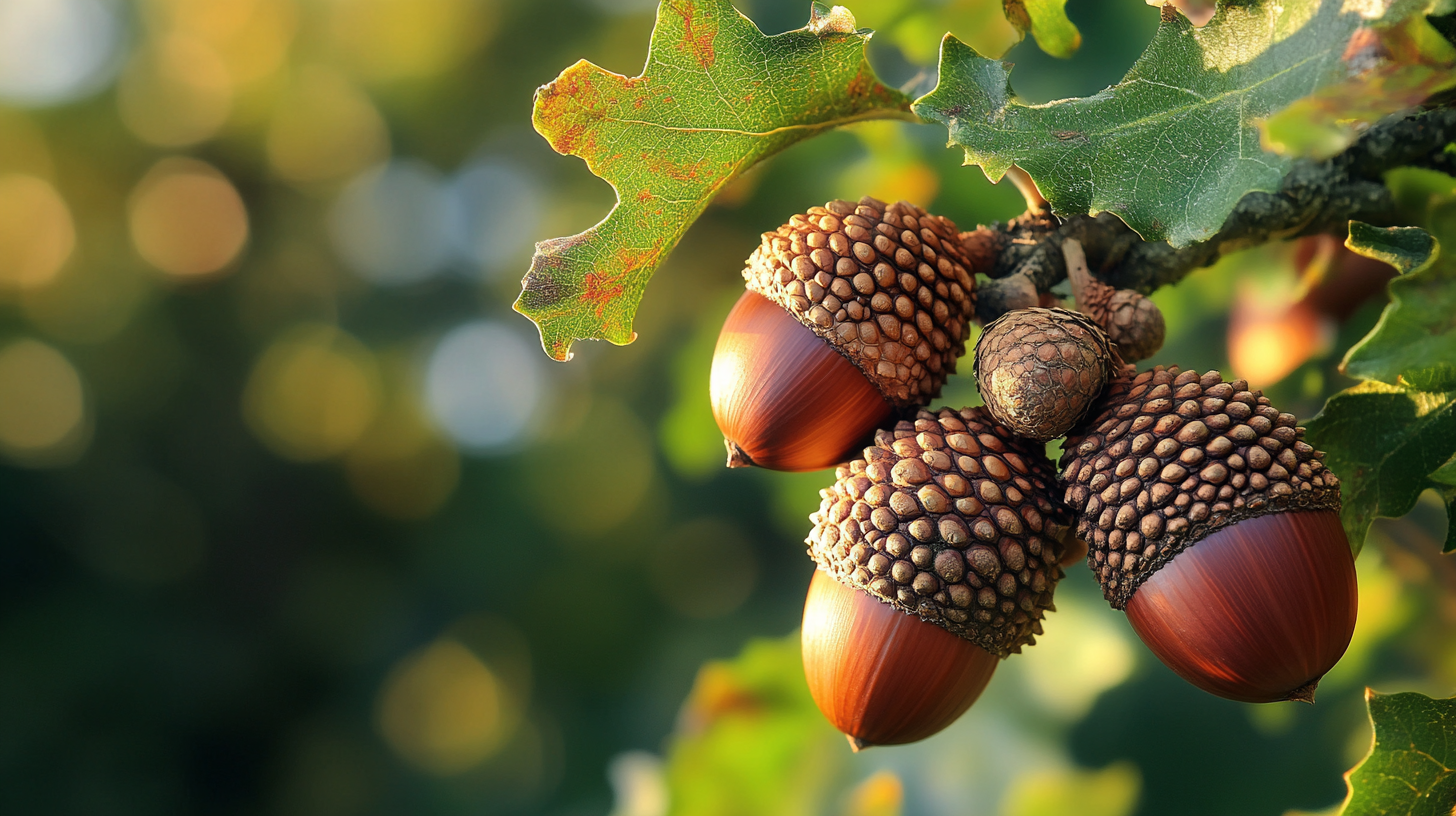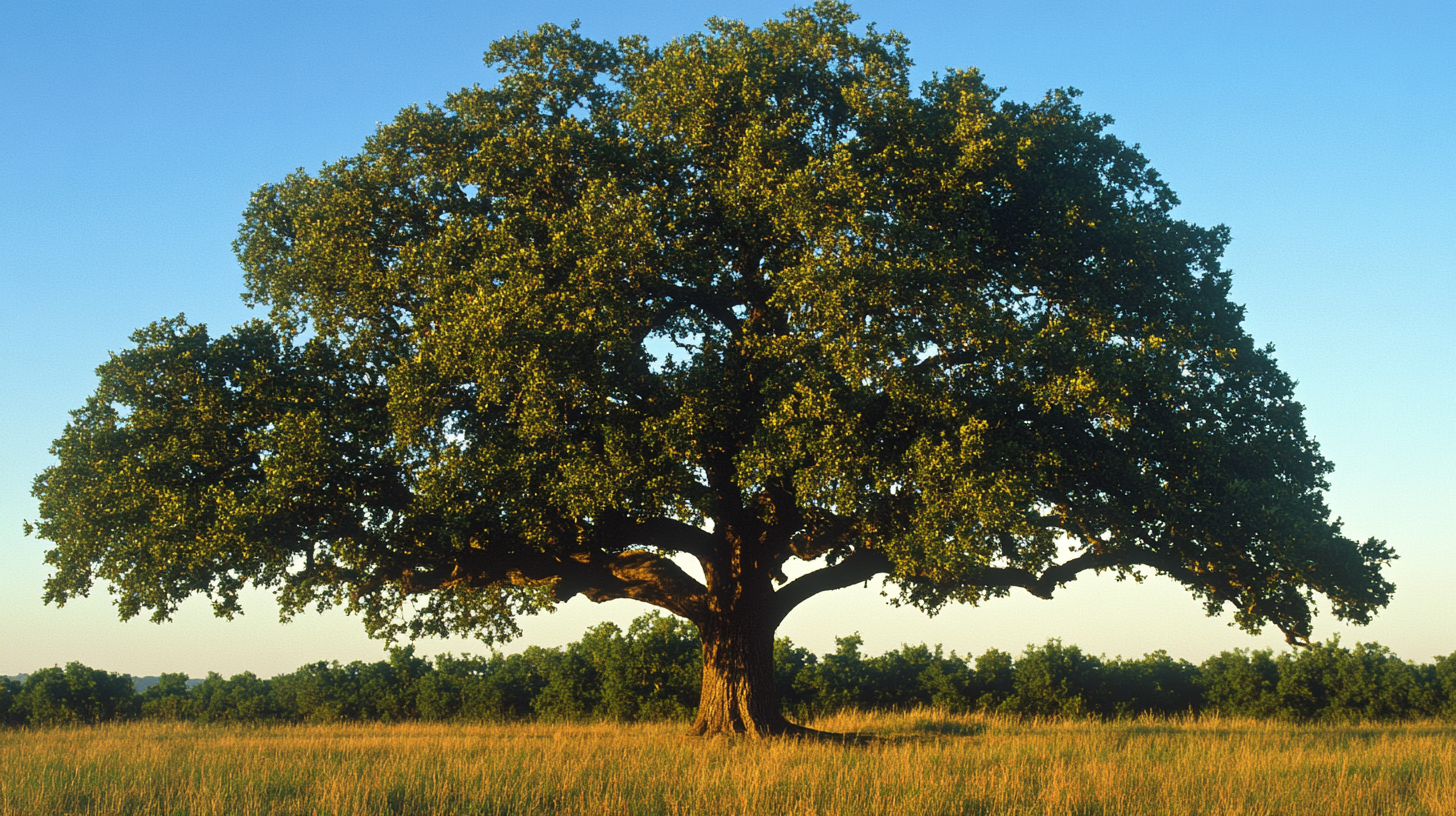Table of Contents
Ever wondered if those little nuts scattered under oak trees are more than just squirrel food? You’re not alone! The question “Are oak tree acorns edible?” has piqued the curiosity of foragers and food enthusiasts alike. Let’s crack open this topic and explore the tasty potential of these often-overlooked nuts.
Introduction: The Acorn’s Hidden Potential
Acorns have been a staple food for many cultures throughout history. Native Americans, ancient Europeans, and Asian civilizations all recognized the nutritional value of these nuts long before we started questioning whether oak tree acorns are edible. Today, there’s a growing interest in rediscovering these forgotten foods, and acorns are at the forefront of this movement.
Why the renewed interest? Well, as we seek sustainable, local food sources, acorns tick all the boxes. They’re abundant, nutritious, and free for the taking. Plus, they connect us to nature in a way that’s both primal and exciting.
What Are Acorns?
Before we dive into the edibility of oak tree acorns, let’s get to know these little nuts better. Acorns are the fruit of oak trees, belonging to the genus Quercus. They’re not just one type of nut – there are about 500 species of oaks worldwide, each producing its own variety of acorn.
Here’s a quick breakdown of acorn anatomy:
- Cap: The “hat” of the acorn, attached to the tree
- Shell: The hard outer covering
- Kernel: The meaty inside part (the part we’re interested in eating!)
Acorns come in all shapes and sizes, from the tiny ones produced by shrub oaks to the hefty nuts of the Bur Oak. Some are long and slender, others round and plump. Their flavor and tannin content can vary widely depending on the species.
The Big Question: Can You Eat Acorns?
So, are oak tree acorns edible? The short answer is yes, but with a big caveat – they need proper preparation. Raw acorns are not safe to eat in large quantities due to their high tannin content. Tannins are bitter compounds that can cause digestive issues and even be toxic in large amounts.
But don’t let that scare you off! Humans have been eating acorns for thousands of years. The key is in the preparation. By leaching out the tannins, we can transform acorns from bitter, potentially harmful nuts into a nutritious and versatile food source.
Harvesting Acorns: When and How
If you’re keen to try oak tree acorns as food, the first step is harvesting. The best time to collect acorns is in the fall when they’re ripe and falling from the trees. Here are some tips for successful acorn foraging:
- Look for acorns that have turned brown and fallen from the tree.
- Avoid green acorns – they’re not ripe yet.
- Check for small holes in the shell, which could indicate insect infestation.
- Collect more than you think you’ll need – many acorns may be unsuitable once you crack them open.
Remember, sustainable foraging is crucial. Only take what you need and leave plenty for wildlife that depends on acorns for food.
Preparing Acorns for Consumption
Now comes the crucial part – preparing oak tree acorns to make them edible. The main goal is to remove those bitter tannins. Here’s a step-by-step guide:
- Shell the acorns: Crack open the shells and remove the kernels.
- Sort the kernels: Discard any that are discolored or have signs of mold.
- Leach the tannins: This can be done through hot or cold leaching.
Hot Leaching Method:
- Boil the acorn kernels in water until the water turns dark.
- Drain and repeat with fresh water until the water remains clear.
- This process is faster but may cook the acorns, changing their nutritional profile.
Cold Leaching Method:
- Soak acorn pieces in cold water.
- Change the water daily until it no longer turns brown (this can take up to a week).
- This method preserves more nutrients but takes longer.
Once leached, your acorns are ready for use!
Nutritional Value of Acorns
Oak tree acorns pack a nutritional punch. They’re rich in carbohydrates, protein, and healthy fats. Here’s a breakdown of their nutritional content per 100g of dried acorns:
| Nutrient | Amount |
|---|---|
| Calories | 387 |
| Protein | 6.2g |
| Fat | 23.9g |
| Carbs | 40.8g |
| Fiber | 10.4g |
Acorns are also a good source of vitamins B and E, as well as minerals like magnesium, potassium, and iron. They’re lower in fat than many other nuts, making them a heart-healthy option.
Culinary Uses for Acorns
Once you’ve prepared your acorns, a world of culinary possibilities opens up. Here are some ways to use edible oak tree acorns:
- Acorn flour: Grind dried acorns into a fine powder. Use it to replace up to 50% of wheat flour in recipes.
- Roasted acorns: Toss leached acorns with oil and salt, then roast for a crunchy snack.
- Acorn coffee: Roast acorns until dark, grind, and brew like coffee for a caffeine-free alternative.
- Acorn brittle: Use acorns instead of peanuts in your favorite brittle recipe.
Acorn flour can be used in breads, pancakes, and even pasta. Its nutty flavor adds depth to baked goods and savory dishes alike.
Acorns in Different Cultures
The use of oak tree acorns as food isn’t a new concept. Many cultures have long traditions of acorn consumption:
- Native Americans: Tribes across North America used acorns as a staple food, often grinding them into meal for porridge or bread.
- Korean cuisine: Acorn jelly, or “dotorimuk,” is a popular dish made from acorn starch.
- Mediterranean cultures: Ancient Greeks and Romans valued acorns both as food and medicine.
These traditions remind us that acorns aren’t just edible – they’re a valuable food source with a rich cultural history.
Potential Risks and Considerations
While oak tree acorns are edible, there are some things to keep in mind:
- Allergies: If you’re allergic to tree nuts, you may also be allergic to acorns.
- Proper preparation: Eating raw or improperly leached acorns can cause digestive issues.
- Sustainability: Always forage responsibly to ensure enough acorns remain for wildlife.
Acorns Beyond the Plate
Acorns aren’t just for eating. They play a crucial role in forest ecosystems:
- They’re a primary food source for many animals, including deer, squirrels, and birds.
- Oak trees and their acorns support biodiversity in forests.
- Acorns can be used for crafts, natural dyes, and even as a soap substitute.

FAQs About Edible Acorns
Q: Are all oak acorns edible?
A: Yes, all oak acorns are edible when properly prepared, but some varieties taste better than others.
Q: How long do acorns last after harvesting?
A: Properly dried acorns can last for months or even years when stored in a cool, dry place.
Q: Can you eat green acorns?
A: It’s best to wait until acorns are ripe (brown) before harvesting. Green acorns are higher in tannins and harder to process.
Q: What do acorns taste like?
A: Properly leached acorns have a mild, nutty flavor similar to chestnuts.
Conclusion: Embracing Nature’s Bounty
So, are oak tree acorns edible? Absolutely! With the right preparation, these often-overlooked nuts can be a nutritious and tasty addition to your diet. They offer a unique way to connect with nature and explore traditional food practices.
Whether you’re a curious forager, a survival enthusiast, or just someone looking to try something new, acorns offer a world of culinary possibilities. So next time you’re crunching through fallen leaves on an autumn walk, take a closer look at those acorns. You might just be stepping on your next meal!
Remember, the key to enjoying edible oak tree acorns is proper identification, harvesting, and preparation. With a little effort, you can transform these humble nuts into a delicious and sustainable food source. Happy foraging!




